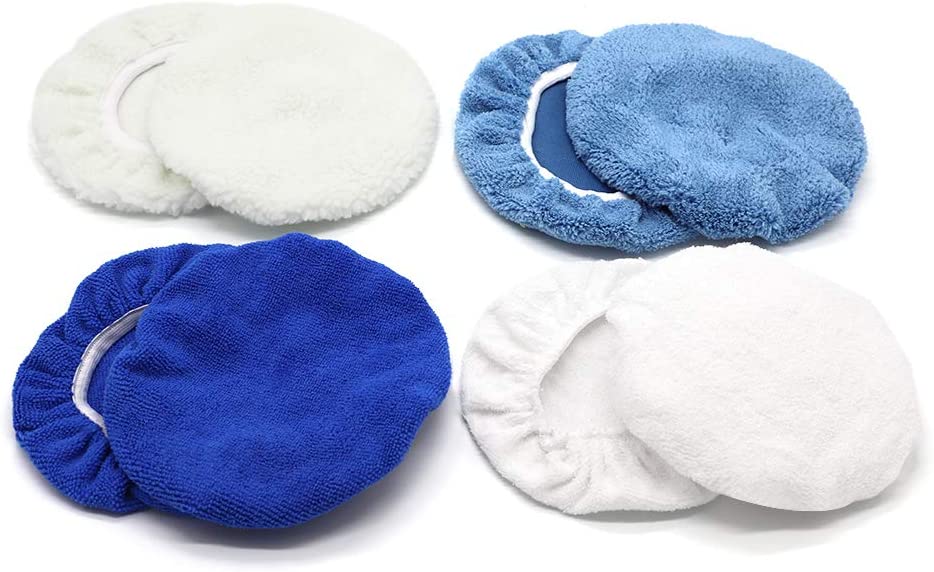
- English
- Español
- Português
- русский
- Français
- 日本語
- Deutsch
- tiếng Việt
- Italiano
- Nederlands
- ภาษาไทย
- Polski
- 한국어
- Svenska
- magyar
- Malay
- বাংলা ভাষার
- Dansk
- Suomi
- हिन्दी
- Pilipino
- Türkçe
- Gaeilge
- العربية
- Indonesia
- Norsk
- تمل
- český
- ελληνικά
- український
- Javanese
- فارسی
- தமிழ்
- తెలుగు
- नेपाली
- Burmese
- български
- ລາວ
- Latine
- Қазақша
- Euskal
- Azərbaycan
- Slovenský jazyk
- Македонски
- Lietuvos
- Eesti Keel
- Română
- Slovenski
- मराठी
- Srpski језик
What kind of results can I expect from using a polishing bonnet on my car?
2024-10-21

What are the benefits of using a polishing bonnet on my car?
Using a polishing bonnet on your car provides multiple benefits. For starters, it helps to remove traces of oxidation, swirl marks, and abrasions on the paint. This, in turn, makes the vehicle look newer and enhances its aesthetic appeal. Secondly, it smooths out any minor scratches, dents, or cracks on the surface, thereby mitigating the damage. Finally, it buffs out the surface to a high shine, making the paint appear shiny and polished.
What types of polishing bonnets are available for use?
Polishing bonnets come in different sizes and shapes to fit different power buffer machines. They are available in diameters ranging from 4 inches to 12 inches. Some of the popular types of polishing bonnets are:
- Flat foam bonnets
- Twisted wool bonnets
- Microfiber bonnets
- Waffle weave bonnets
How often should I replace my polishing bonnet?
Polishing bonnets eventually wear out and become ineffective. The frequency of replacement depends on how often you use it and how dirty it gets. It's recommended to replace the bonnet every 4-6 times of use or when it becomes heavily soiled or damaged.
Can I use a polishing bonnet on a matte finish car?
No, it's not recommended to use a polishing bonnet on matte finish cars. Polishing can remove the matte finish, leaving behind a glossy surface, which is not desirable. Also, microfiber bonnets tend to attract dust and debris that can stick on a matte surface, becoming difficult to remove later on.
In conclusion, a polishing bonnet is a useful accessory for any car enthusiast who loves to maintain their vehicle's exterior shine. Using the right polishing bonnet on a regular basis can help to keep the car's surface in pristine condition and lengthen its lifespan.
Company Introduction
NingboHaishuAite Housewares Co.,Ltd. is a leading supplier of cleaning products in China. We specialize in producing premium quality microfiber towels and polishing bonnets for cars, boats, and other surfaces. Our products are available for both retail and wholesale customers, and we offer competitive prices and bulk discounts. To learn more about our products or place an order, visit our website at https://www.aitecleaningproducts.com. For sales inquiries, please contact us at sales5@nbaiyite.cn.
Here are ten scientific papers related to car polishing:
Burns, E. R. (1986). Polishing of metal surfaces. Journal of Applied Physics, 60(3), 1115-1123.
Dong, Q., Zhao, Z., Wang, X., & Sun, Y. (2018). Contact mechanics and pad roughness optimization in chemical mechanical polishing of sapphire substrates. International Journal of Machine Tools and Manufacture, 130, 82-91.
Ehmann, K. F. (1984). Mechanisms of material removal in lapping and polishing. Journal of Engineering for Industry, 106(2), 169-175.
Ffresh, M. J., & Wood, R. J. (2014). On the simulation of slab and slab-like high-speed polishing processes. Wear, 320, 44-52.
Gefanty, A. S. (2015). Apparatus for polishing a metal surface and related methods. U.S. Patent No. 9,060,616.
Hwang, S. H., & Lee, J. H. (2007). Modeling of chemical mechanical polishing of copper. Materials Science and Engineering: B, 137(1-3), 234-241.
Komanduri, R., & Tani, J. I. (1984). Surface roughness model for diamond turning and lapping of metals. Journal of Engineering for Industry, 106(3), 298-305.
Labronici, F., & Khellaf, A. (2011). Reducing the material-removal variable in electropolishing by using electrochemical machining. Journal of Materials Processing Technology, 211(9), 1575-1582.
Maetani, Y., Shinozaki, H., Kuriyagawa, T., & Komanduri, R. (2012). Theoretical and experimental investigation of material transfer mechanism in high speed polishing. Precision Engineering, 36(2), 342-350.
Rivera, D. (2010). The impact of diamond grit size on surface finish in ultra-precision grinding. Journal of Materials Processing Technology, 210(3), 441-447.


